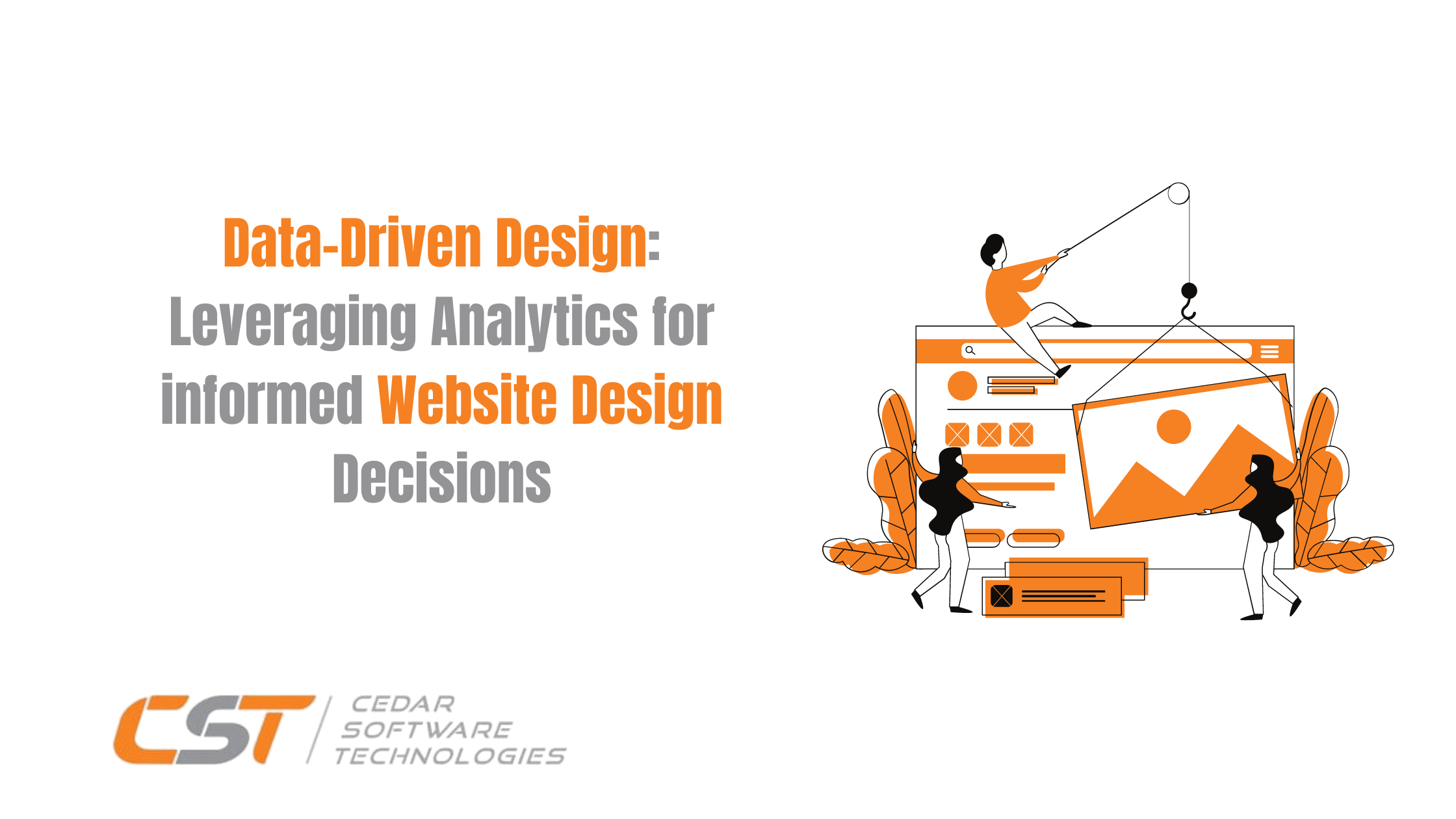The way we approach design has changed a lot these days in the digital age! Data-driven design or evidence-based design has come to the forefront as the availability and accessibility of data have evolved. This type of methodology emphasises the use of data and analytics to inform and guide design decisions. Designers today leverage analytics to gain valuable insights into user preferences, behaviour, and needs leading to more effective and successful design outcomes. This article from Cedar Software Technologies, premier Digital Marketing Agency in Kochi explores the concept of data-driven design and Leveraging Analytics for informed Design Decisions.
Data-driven design is based on the belief that decisions should be based on objective evidence rather than subjective thoughts or assumptions. Designers can uncover patterns, trends, and correlations that can inform the design process by collecting and analysing data. This approach equips designers to create user-centric designs that are customised to meet the specific needs and expectations of their target audience.
Enhancing user experience is one of the primary benefits of data-driven design! By analysing user data like website traffic, click-through rates, and conversion rates, designers can identify areas for improvement and optimise the user journey. Designers can make data-backed adjustments to enhance usability and engagement.
Apart from that, data-driven design enables designers to test and validate their design decisions. With A/B testing, designers can compare two or more design variations and determine which performs better in terms of user engagement, conversions, or other key metrics. This iterative approach empowers designers to make evidence-based design decisions and continually refine their designs based on real user feedback.
Predictive analytics is yet another aspect of data-driven design that is used mostly in eCommerce. Historical data and patterns analysis help designers to anticipate user behaviour and preferences, allowing them to proactively design solutions that align with user expectations.
Data-driven design is not limited to digital interfaces or user experience. It can also be applied to various design disciplines, including industrial design, architecture, and urban planning. By analysing data on user needs, behaviour, and preferences, designers in these fields can create more functional and sustainable solutions that align with the intended purpose and context.
However, data-driven design has its challenges! Designers must ensure the quality and reliability of the data they collect and analyse. They must also navigate ethical considerations like data privacy and consent, to ensure that user data is handled responsibly and transparently.
Designers should collaborate closely with data analysts or acquire basic data analysis skills themselves to successfully accomplish data-driven design. They need to understand how to collect relevant data, interpret analytics, and translate insights into actionable design decisions. They should also promote a culture of data-driven decision-making within their organisations, encouraging cross-functional teamwork and knowledge-sharing.
With the continuous developments in data collection, analysis tools, and techniques, data-driven design is set to become an increasingly integral part of the design process across various industries. As a major web design company in Kochi Cedar helps you grow your business with Data-driven design leveraging analytics for informed design decisions.
